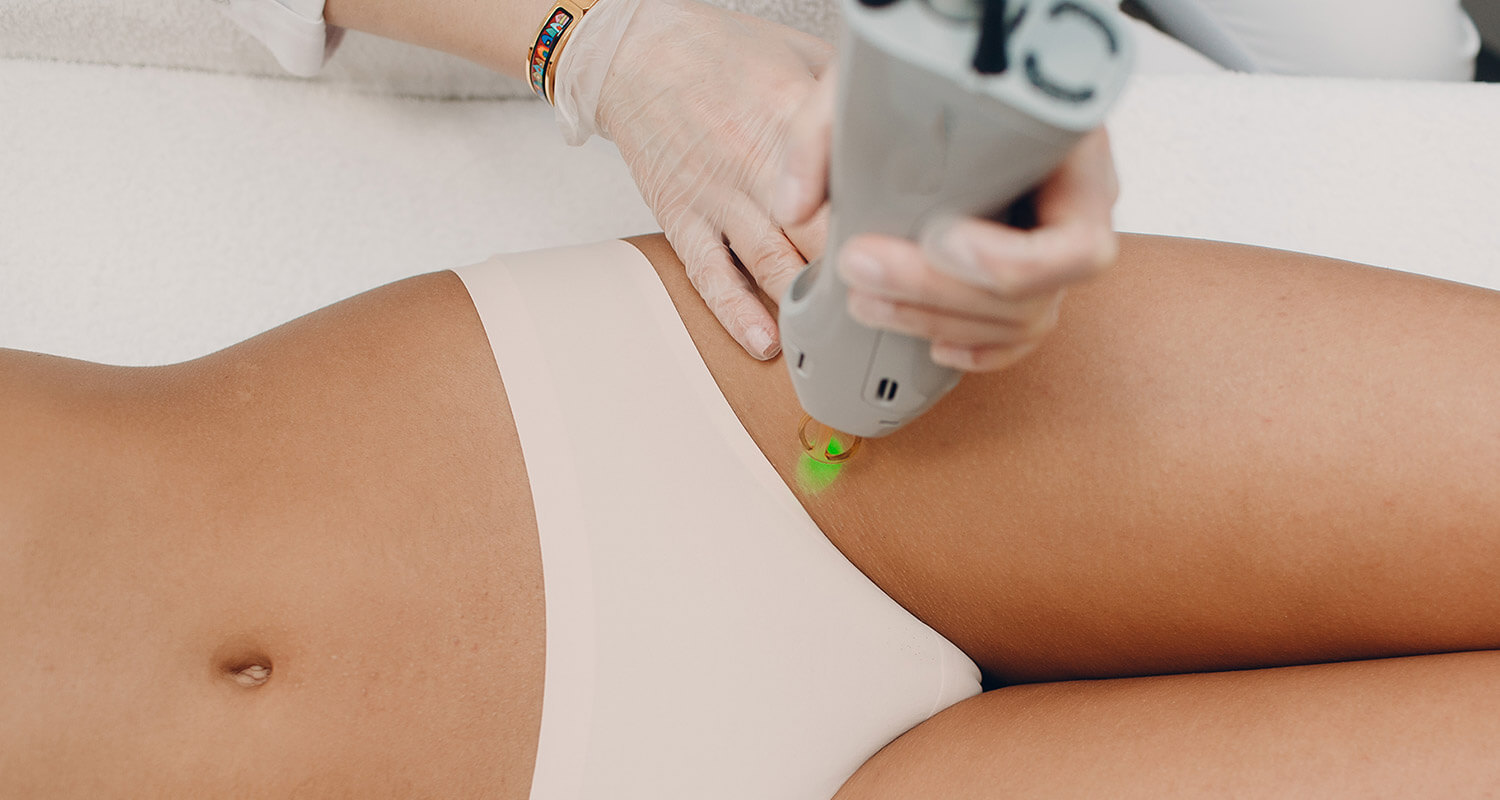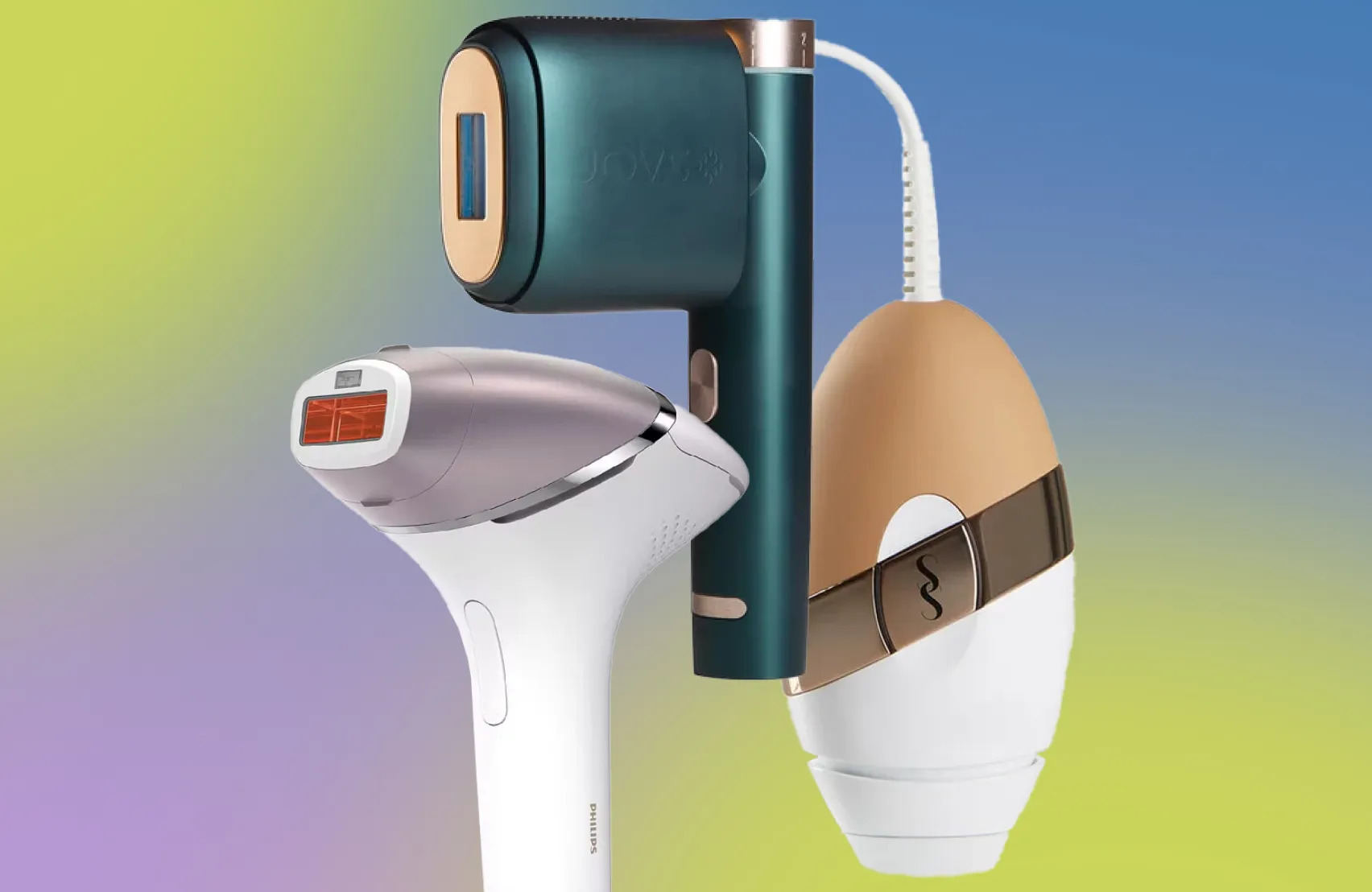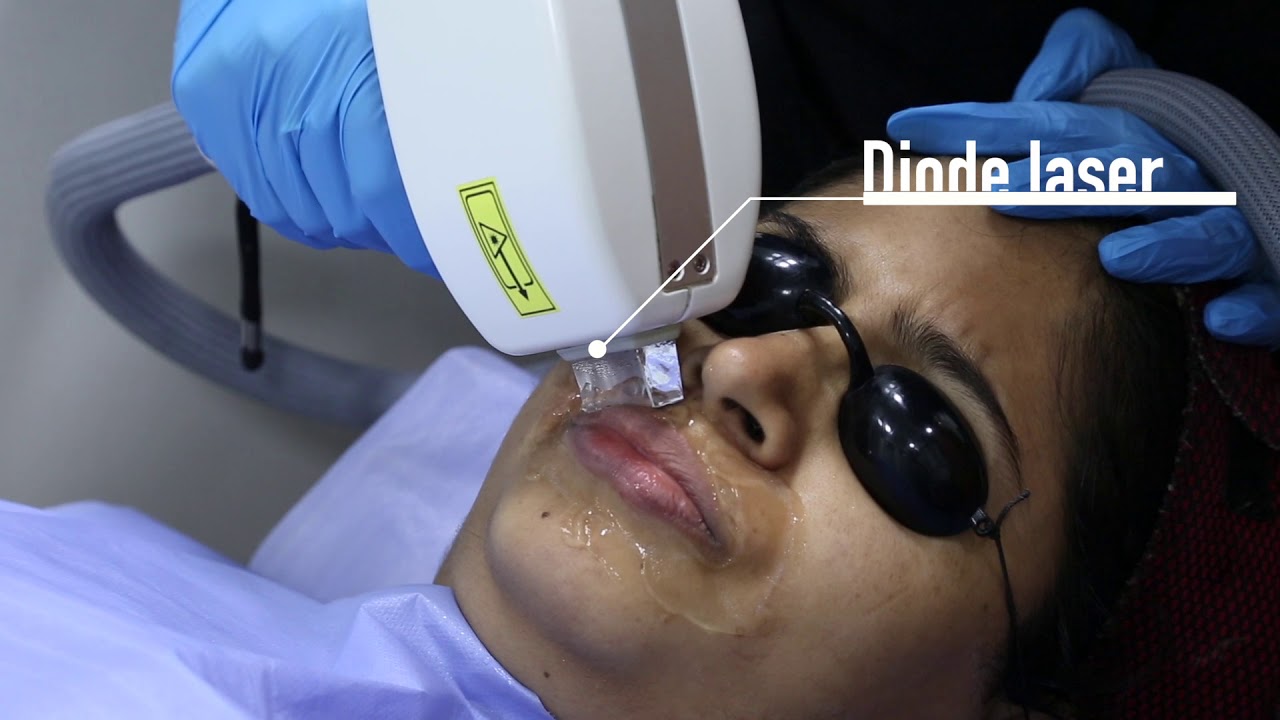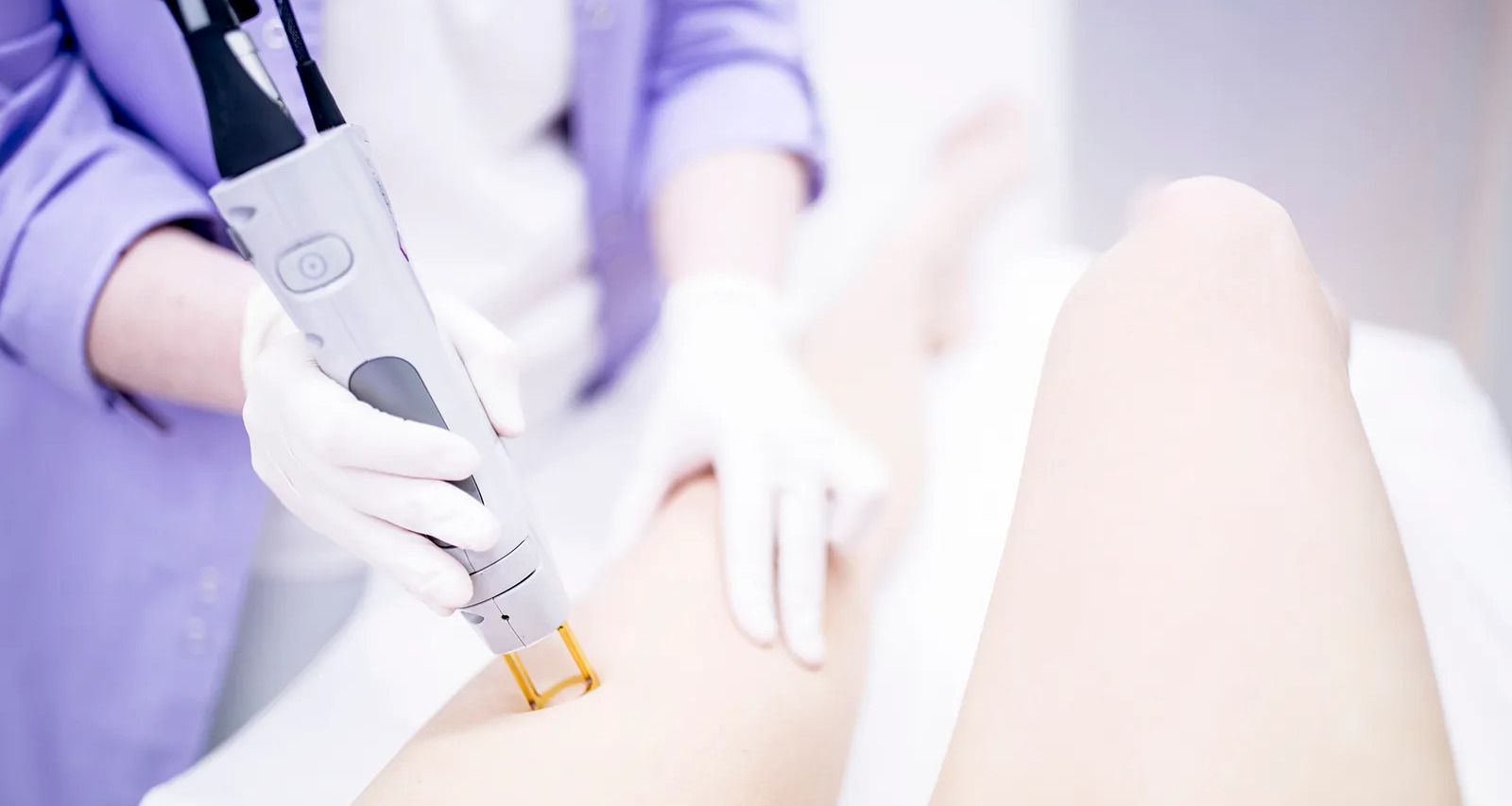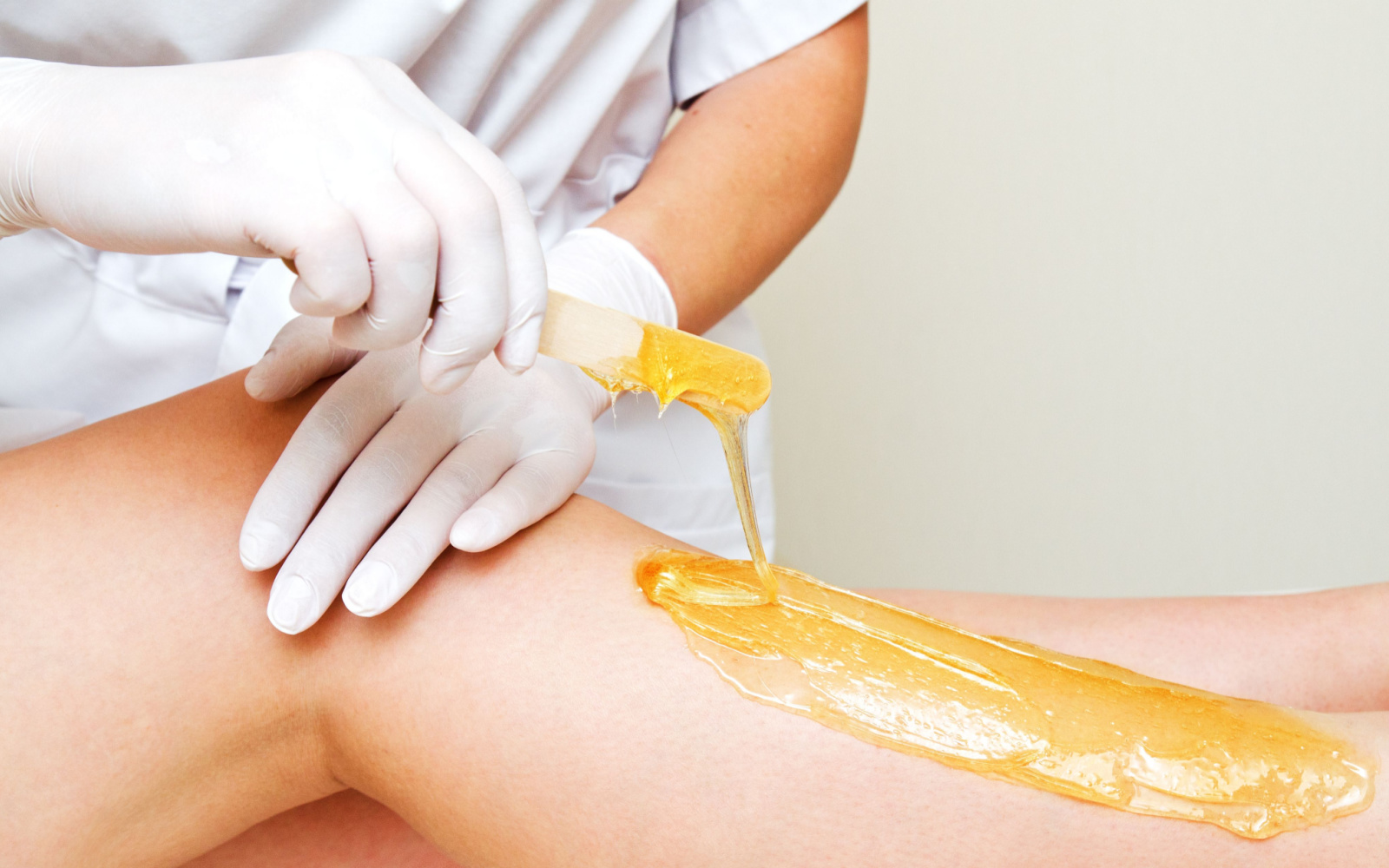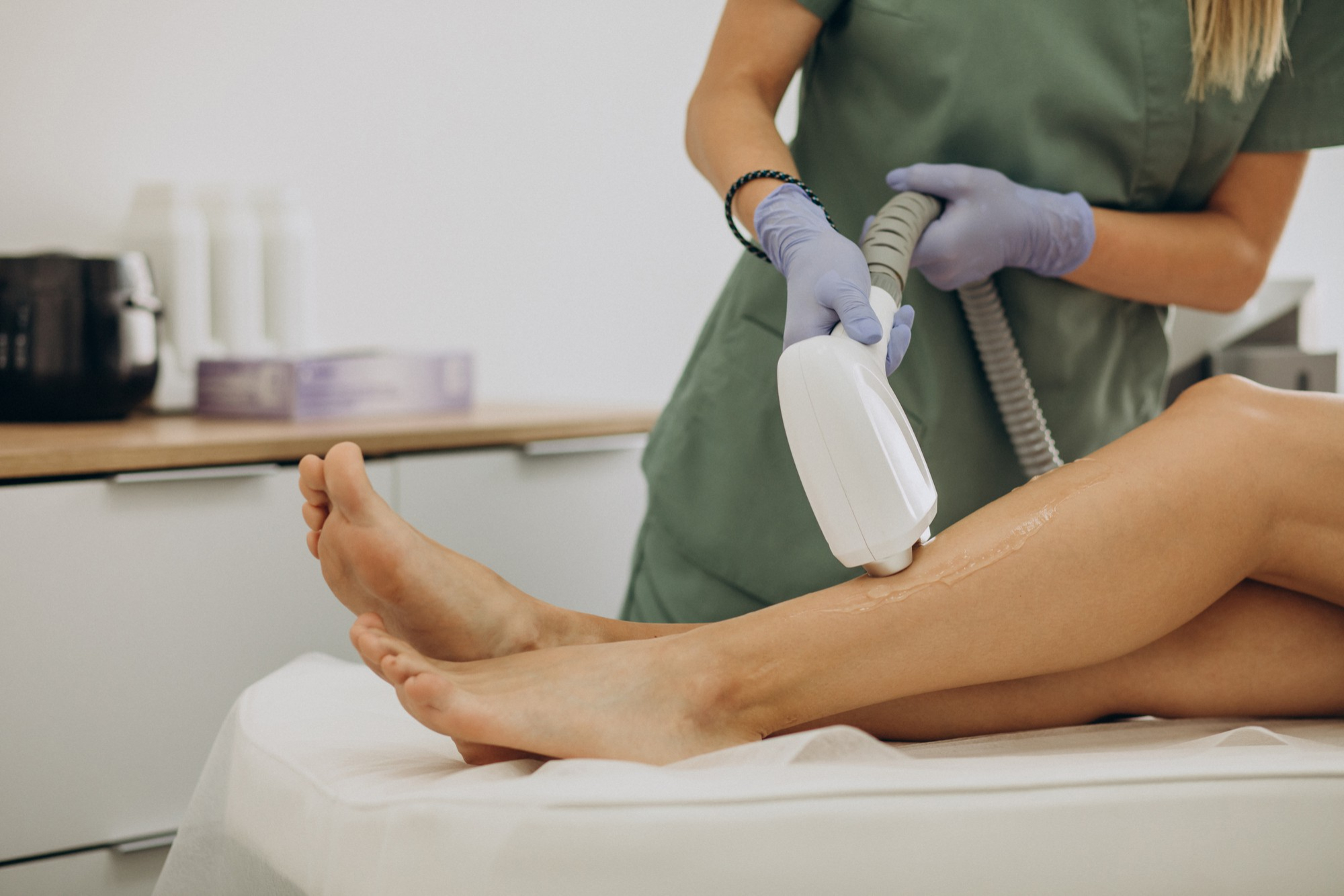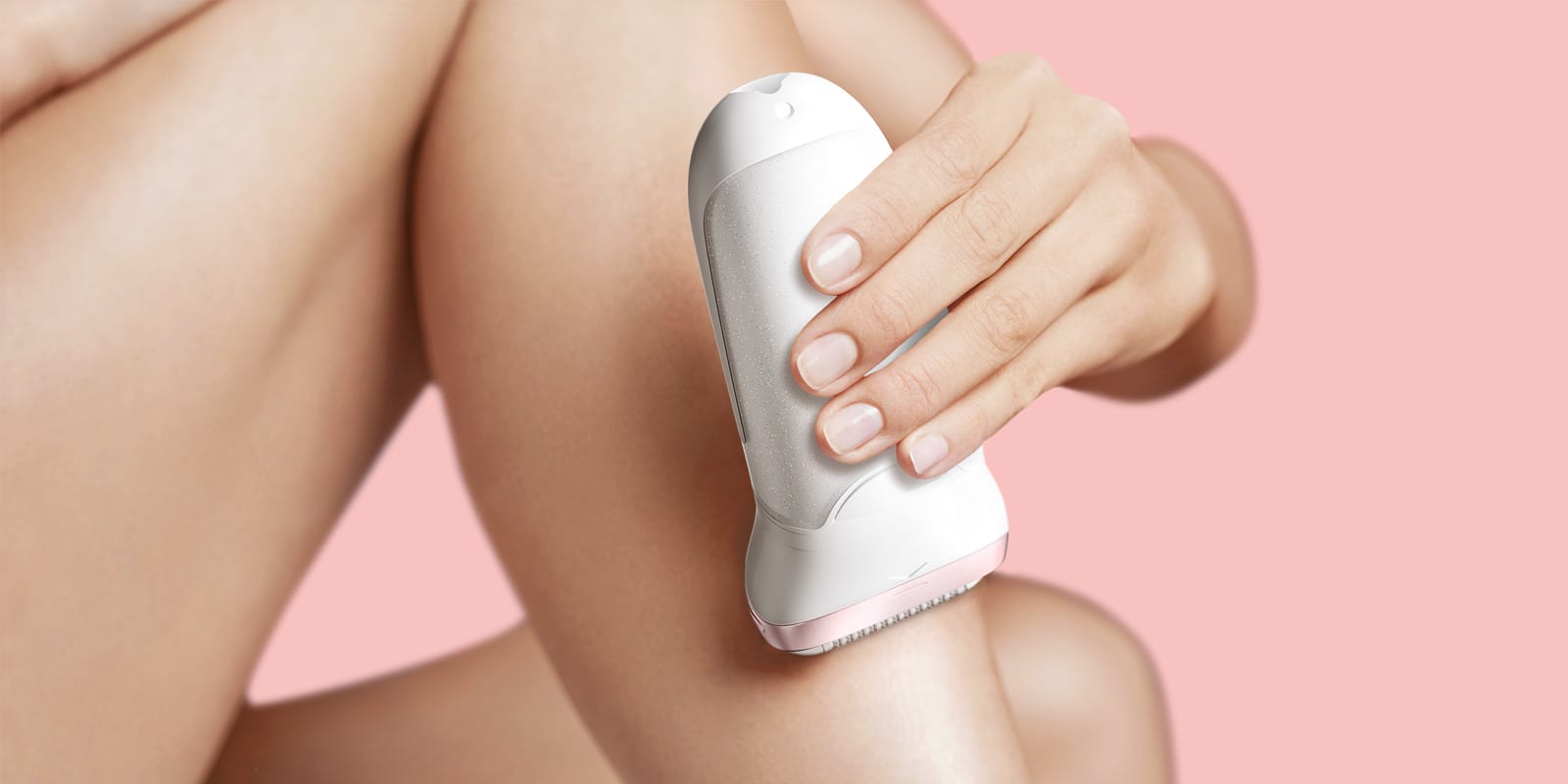

FAQs
What Is Epilator Hair Removal
Modified: August 5, 2023
Learn everything you need to know about epilator hair removal including general questions and tips for smooth and long-lasting results.
(Many of the links in this article redirect to a specific reviewed product. Your purchase of these products through affiliate links helps to generate commission for Under-tec.com, at no extra cost. Learn more)
Table of Contents
Introduction
Are you tired of dealing with unwanted hair and seeking a long-term hair removal solution? Look no further than an epilator. Epilator hair removal is gaining popularity among individuals seeking a convenient and effective way to remove unwanted hair from various parts of the body. Whether you’re tired of constant shaving, painful waxing sessions, or frustrating hair regrowth, an epilator might just be the solution you’ve been searching for.
So, what exactly is an epilator? Simply put, it is an electronic device that removes hair by grasping multiple hairs simultaneously and pulling them out from the root. Unlike other hair removal methods, such as shaving or depilatory creams, which only remove hair from the surface, epilation offers longer-lasting results. With regular use, epilators can significantly reduce hair regrowth, leaving your skin smooth and hair-free for weeks at a time.
Epilators come in various designs and sizes, from small handheld devices to larger, more advanced models with additional features. Some offer cordless operation, allowing for flexibility and ease of use, while others come equipped with different attachments and speed settings to cater to different hair types and areas of the body.
Using an epilator may require some getting used to, as it can initially cause mild discomfort or pain. However, over time, as your hair becomes finer and weaker due to consistent epilation, the process becomes more tolerable. Despite the initial discomfort, many individuals find the long-term benefits of epilator hair removal well worth it.
In this article, we will explore in-depth the functioning of an epilator, the pros and cons of using one, essential tips for effective use, precautions to take, alternative hair removal methods, and more. By the end, you’ll have a comprehensive understanding of epilator hair removal and be well-equipped to decide if it is the right choice for you.
How Epilator Hair Removal Works
Epilator hair removal works by using a rotating disc or a series of tweezers to grasp multiple hairs simultaneously and pull them out from the root. The device is designed to be held against the skin, and as it moves across the area being treated, the rotating disc or tweezers catch and remove the hairs. This process is repeated until the desired area is hair-free.
When the hairs are pulled out from the root, it takes longer for them to grow back compared to other hair removal methods, such as shaving or depilatory creams. This is because epilation removes the hair from under the skin, including the hair follicle, which is responsible for hair growth.
Epilators can be used on various parts of the body, including the legs, arms, underarms, bikini area, and even the face. Some epilators come with different attachments and speed settings, allowing for more precise and customizable hair removal experience. For example, an epilator may have a sensitive area attachment for delicate areas or a wider head attachment for larger areas like the legs.
It is important to note that epilation may cause some discomfort, especially for first-time users. The sensation can range from mild to moderate, depending on your pain tolerance and the area being treated. However, as you continue to use an epilator, your hair becomes finer and weaker, making the process more tolerable over time.
It is recommended to exfoliate the skin before using an epilator to remove dead skin cells and prevent ingrown hairs. Exfoliating also helps the epilator to grip the hair more effectively, resulting in smoother and longer-lasting results.
Overall, epilator hair removal offers a convenient and efficient way to achieve long-lasting hair-free skin. With regular use, the hair becomes weaker and sparser, reducing the need for frequent sessions. While it may not be completely pain-free, many individuals find the results outweigh the discomfort, as they are satisfied with the smoothness and extended periods between hair regrowth.
Pros of Epilator Hair Removal
Epilator hair removal offers numerous benefits for those seeking a convenient and effective method to remove unwanted hair. Here are some of the key advantages of using an epilator:
- Long-lasting results: Unlike shaving or depilatory creams that only remove hair from the surface, epilation removes hair from the root, resulting in longer-lasting smoothness. With regular use, epilation can significantly reduce hair regrowth, allowing you to enjoy hair-free skin for weeks at a time.
- Convenience: Epilators are portable and easy to use. They can be used in the comfort of your own home without the need for appointments or visits to a salon. You have the flexibility to remove hair whenever it’s convenient for you.
- Cost-effective: Investing in an epilator can save you money in the long run. Unlike other hair removal methods that require ongoing purchases, such as razors or waxing kits, an epilator is a one-time purchase. There are no additional costs for replacement cartridges or salon appointments.
- Efficiency: Epilators are designed to remove multiple hairs simultaneously, making the process quick and efficient. You can cover a larger area in a shorter amount of time compared to other methods like plucking or threading.
- Hair growth reduction: Regular use of an epilator can lead to significant hair growth reduction over time. As the hair is removed from the root, the hair follicle weakens, resulting in finer and sparser hair regrowth. This means less time spent on hair removal in the long term.
- Exfoliation benefits: Epilators provide a dual benefit of hair removal and exfoliation. As the rotating disc or tweezers remove the hair, they also help to exfoliate the skin, leaving it smoother and radiant. Regular exfoliation can help prevent ingrown hairs and improve the overall texture of the skin.
It is important to note that the benefits of epilator hair removal vary from person to person. Factors such as hair texture, hair growth cycle, pain tolerance, and proper use of the device can influence the effectiveness and overall experience of using an epilator. However, many individuals find that the pros outweigh the cons, as they enjoy the convenience, long-lasting results, and cost-effectiveness of epilator hair removal.
Cons of Epilator Hair Removal
While epilator hair removal offers many advantages, it is important to consider the potential drawbacks before incorporating it into your hair removal routine. Here are some of the commonly cited cons of using an epilator:
- Pain or discomfort: Epilation can be uncomfortable, especially for those who are new to using an epilator. The process of pulling out hair from the root can cause mild to moderate pain or discomfort, especially in sensitive areas. However, the level of pain varies from person to person, and many users report that the discomfort lessens with regular use.
- Ingrown hairs: Some individuals may experience ingrown hairs after using an epilator. Ingrown hairs occur when the hair grows back into the skin instead of emerging from the follicle. To minimize the risk of ingrown hairs, it is important to exfoliate regularly and properly prepare the skin before epilation.
- Redness or irritation: After epilation, it is common to experience temporary redness or skin irritation. This is typically a mild reaction that subsides within a few hours. However, individuals with sensitive skin may be more prone to prolonged redness or irritation. Applying a soothing lotion or aloe vera gel after epilation can help alleviate any discomfort.
- Not suitable for all hair types: Epilators may not be as effective on very short or fine hair. The rotating disc or tweezers need enough hair length to grip onto for successful removal. Additionally, individuals with thicker or coarse hair may find that epilation is more painful and less efficient compared to other hair removal methods.
- Time-consuming: Epilating can be a time-consuming process, especially when treating larger areas of the body. Unlike shaving, which can be done quickly, epilation requires covering each section thoroughly to ensure proper hair removal. This may not be ideal for those with a busy schedule or limited time for grooming.
- Initial investment: While an epilator can save money in the long run, the initial purchase cost may be higher compared to other hair removal options. However, considering the long-term benefits and cost savings, many individuals find the investment worthwhile.
It’s important to note that the cons of epilator hair removal can vary depending on individual factors such as pain tolerance, skin sensitivity, and hair type. While some individuals may find the drawbacks outweigh the benefits, others may embrace the long-lasting results and convenience that epilation offers. Ultimately, it’s a personal decision based on individual preferences and needs.
Tips for Using an Epilator
To ensure an effective and comfortable epilation experience, here are some helpful tips to consider when using an epilator:
- Prepare your skin: Exfoliate the skin before using an epilator to remove dead skin cells and prevent ingrown hairs. This helps the epilator grip the hairs more effectively and results in a smoother hair removal process.
- Choose the right epilator: Consider your specific needs and look for an epilator that is suitable for your hair type and the area of the body you plan to treat. Some epilators come with different attachments or speed settings, allowing for more customized and efficient hair removal.
- Trim longer hairs: If your hair is longer than the recommended length for epilation, it’s a good idea to trim it beforehand. This helps the epilator grasp the hairs better and reduces any discomfort during the process.
- Hold the epilator at the right angle: It’s important to hold the epilator at a 90-degree angle to your skin for optimal results. This allows the tweezers or rotating disc to grip the hair properly and ensure efficient removal.
- Start with less sensitive areas: If you’re new to epilation or have sensitive skin, it’s advisable to start with less sensitive areas of the body, such as the legs, before moving on to more sensitive areas like the underarms or bikini area. This gives you time to adapt to the sensation and minimize any discomfort.
- Epilate after a warm shower or bath: Warm water helps to open up the hair follicles, making hair removal with an epilator easier and less painful. Consider epilating after a warm shower or bath when your skin is moist and the pores are relaxed.
- Take breaks if needed: If you experience excessive discomfort or find the process too overwhelming, feel free to take breaks during epilation. You can resume when you’re ready to continue, ensuring a more comfortable and manageable experience.
- Moisturize after epilation: After using an epilator, apply a soothing lotion or moisturizer to hydrate the skin and reduce any redness or irritation. This helps to calm the skin and keep it in good condition post-epilation.
- Maintain regular use: For the best and longest-lasting results, make sure to regularly use your epilator. Consistency is key in reducing hair growth and maintaining smooth skin. Set a schedule that works for you and stick to it.
By following these tips, you can have a more effective and comfortable epilation experience. Remember that each person’s experience with an epilator may vary, so don’t be discouraged if it takes a few tries to find the right techniques and settings that work best for you.
Precautions and Safety Measures
While epilator hair removal can be an effective method for removing unwanted hair, it is important to follow certain precautions and safety measures to ensure a safe and successful experience. Consider the following precautions before using an epilator:
- Read the instructions: Familiarize yourself with the user manual and instructions provided by the manufacturer. Each epilator may have specific guidelines and recommendations that you should follow for proper use.
- Test on a small area: Before using an epilator on a larger area, it’s advisable to test it on a small patch of skin to check for any adverse reactions or sensitivity. This helps to ensure that your skin can tolerate the process.
- Do not use on broken or irritated skin: Avoid using an epilator on skin that is broken, irritated, or has open wounds. Epilation in such areas can lead to further irritation, pain, and possible infection.
- Do not share your epilator: Epilators should not be shared due to hygienic reasons. Sharing can lead to the transfer of bacteria, which can potentially cause infections or skin issues.
- Clean and maintain your epilator: Regularly clean the epilator according to the manufacturer’s instructions to prevent the accumulation of dirt, oils, or residue. This helps to maintain hygiene and optimal performance.
- Store the epilator properly: After each use, store your epilator in a clean and dry place away from moisture and direct sunlight. This helps to prolong its lifespan and maintain its effectiveness.
- Avoid using on sensitive areas: Exercise caution when using an epilator on sensitive areas of the body, such as the face, bikini area, or underarms. These areas may require lower speed settings or specialized attachments to minimize discomfort.
- Consult a healthcare professional if needed: If you have any underlying skin conditions or medical concerns, it’s advisable to consult a healthcare professional before using an epilator. They can provide guidance and ensure it is safe for you to use.
- Follow the recommended hair length: Check the recommended hair length for epilation with your specific epilator. Hair that is too short may not be effectively removed, while hair that is too long can cause increased discomfort during the process.
- Discontinue use if experiencing severe pain or adverse reactions: If you experience severe pain, excessive redness, irritation, or any other adverse reactions after using an epilator, discontinue use and consult a healthcare professional if necessary.
It is important to prioritize safety and take these precautions into consideration to minimize the risk of any negative side effects or complications. By doing so, you can have a safe and successful epilation experience, achieving the desired results of smooth and hair-free skin.
Alternatives to Epilator Hair Removal
While epilator hair removal offers its advantages, it’s essential to explore alternative methods that may better suit your preferences and needs. Here are some popular alternatives to epilator hair removal:
- Shaving: Shaving is one of the most common and accessible methods of hair removal. It is quick, painless, and suitable for both large and small areas of the body. However, the results are temporary, and hair regrowth occurs relatively quickly.
- Waxing: Waxing involves applying warm or cold wax to the skin and then removing it with a cloth strip, pulling the hair out from the root. It offers longer-lasting results compared to shaving but can be more painful. Waxing can be done at home or performed by a professional in a salon.
- Depilatory creams: Depilatory creams, or hair removal creams, contain chemicals that dissolve the hair at the surface. They are easy to use and painless, but results are temporary, similar to shaving. It’s important to carefully follow the instructions and be cautious of any potential skin sensitivity or reactions.
- Laser hair removal: Laser hair removal is a semi-permanent or permanent hair reduction method that uses laser technology to target and destroy hair follicles. It provides long-lasting results and can be done professionally in a clinic or with at-home devices. Laser hair removal typically requires multiple sessions for optimal results.
- Threading: Threading is a technique that involves using a twisted thread to remove small patches of hair at the follicle level. It is commonly used for facial hair removal, particularly on the eyebrows and upper lip. Threading offers precise results, but it can be time-consuming and may cause temporary redness or irritation.
- Plucking: Plucking involves manually removing hair from the root using tweezers. It is suitable for small areas and precision hair removal, such as shaping eyebrows. Plucking can be time-consuming and potentially painful, especially for those with sensitive skin or a low pain tolerance.
- Eflornithine cream: Eflornithine cream is a prescription medication that slows down the growth of facial hair in women. It is specifically used for unwanted facial hair and requires regular and consistent application to maintain the results.
Each alternative method has its advantages and considerations. Factors such as cost, convenience, pain tolerance, hair type, and desired outcome should be taken into account when choosing the most suitable hair removal option for you. It is recommended to research and possibly consult a professional to determine the best hair removal option that aligns with your preferences and needs.
Conclusion
Epilator hair removal provides an effective and convenient solution for those seeking longer-lasting results in hair removal. With the ability to remove hair from the root, epilators offer smoother skin and reduced hair regrowth compared to traditional methods like shaving or depilatory creams. They also offer the convenience of at-home use and cost savings in the long run.
While using an epilator may initially cause discomfort or pain, many individuals find the long-term benefits well worth it. As the hair becomes weaker and sparser with regular use, the discomfort lessens, making the process more tolerable over time. Preparing the skin, choosing the right epilator, and following essential tips can help optimize the epilation experience.
It’s important to consider the potential cons of epilator hair removal, such as the risk of ingrown hairs, temporary redness or irritation, and the time-consuming nature of the process. Additionally, epilators may not be suitable for all hair types or sensitive areas of the body. Alternative hair removal methods like shaving, waxing, laser hair removal, threading, and depilatory creams provide viable options for those with different preferences and needs.
Ultimately, the choice of whether to use an epilator or opt for an alternative method rests on personal preference, pain tolerance, hair type, and desired outcomes. It may require some experimentation and exploration to find the most suitable hair removal method that works for you.
Remember to follow precautions and safety measures, read the instructions carefully, and consult a healthcare professional if necessary. With proper knowledge and understanding, you can navigate the world of hair removal methods and achieve hair-free, smooth, and radiant skin.

